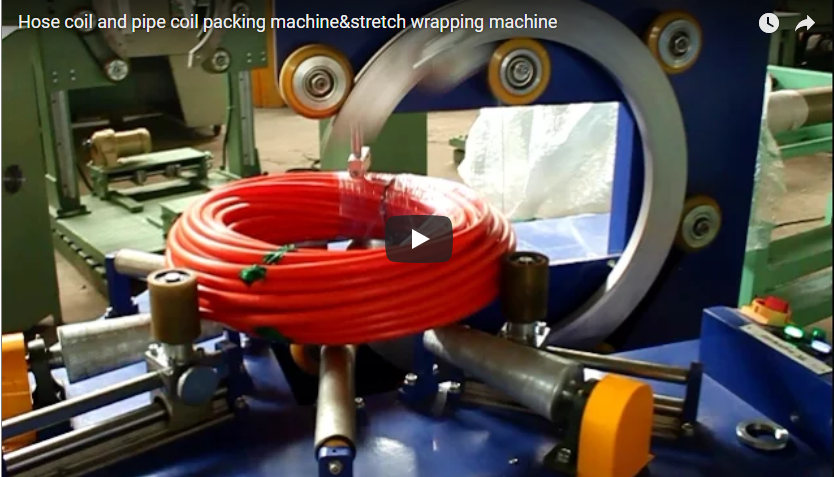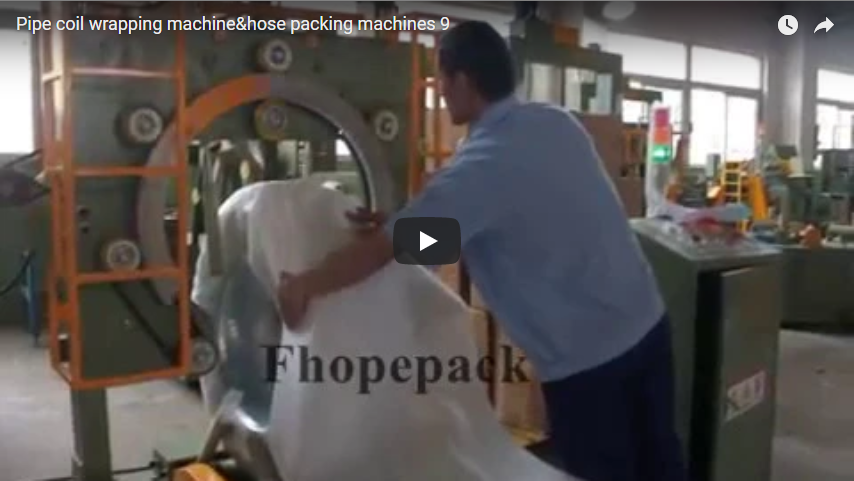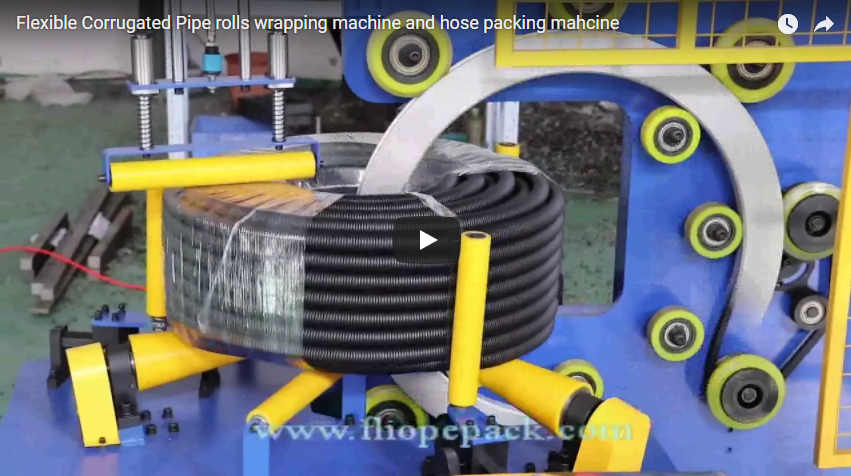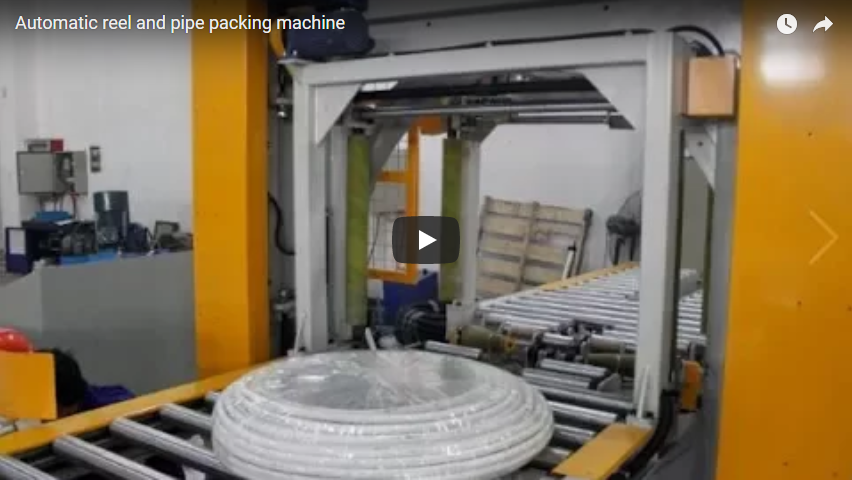Mastering Coil Packaging: A Deep Dive into Hose/Pipe Coil Wrappers and Stretch Wrapping Machines
Manually handling and packaging large, cumbersome hose and pipe coils presents significant challenges in many fabrication and manufacturing environments. It's often labor-intensive, inconsistent, and carries risks of product damage and worker strain. Automating this process with specialized machinery like Hose Coil and Pipe Coil Packing Machines and Stretch Wrapping Machines offers a robust solution, enhancing efficiency, product protection, and overall operational professionalism.
This article delves into the technical aspects, operational benefits, and practical considerations of these essential packaging systems, drawing on industry experience to provide valuable insights for fabricators and operations managers.
1. The Challenge: Manual Coil Handling Inefficiencies
Before exploring automated solutions, it's crucial to understand the drawbacks of manual or semi-manual coil packaging:
- Inconsistent Wrap Quality: Manual wrapping often leads to uneven tension and coverage, potentially leaving products vulnerable during transit.
- Labor Costs & Time: Wrapping large coils by hand is time-consuming and requires significant manpower, diverting resources from core production tasks.
- Material Waste: Inconsistent application can lead to excessive use of stretch film or other wrapping materials.
- Safety Concerns: Handling heavy or unwieldy coils manually increases the risk of musculoskeletal injuries.
- Product Damage: Improperly secured coils are susceptible to damage during handling, storage, and shipping.
2. Automated Solution: The Hose & Pipe Coil Packing Machine (Orbital Wrapper)
Specifically designed for ring-shaped products, the Hose Coil and Pipe Coil Packing Machine, often referred to as an orbital wrapper, revolutionizes the packaging process for items like hydraulic hoses, electrical cables, PEX tubing, and wire coils.
An automated hose coil packing machine demonstrating the orbital wrapping process.
2.1 How It Works: The Orbital Wrapping Principle
The core of this machine is a rotating ring carrying a shuttle with the wrapping material (typically stretch film, but sometimes paper or VCI film). Here's a breakdown of the typical automated process:
- Coil Loading: The hose or pipe coil is placed onto the machine's infeed conveyor or directly into the wrapping station, often supported by rollers.
- Positioning: The coil is automatically centered within the wrapping ring.
- Wrapping Cycle: The ring rotates around the stationary coil while also revolving through the coil's center. The material shuttle dispenses the wrapping film, effectively encasing the entire coil circumferentially.
- Tension Control: Advanced systems precisely control the film tension, ensuring a tight, secure wrap without damaging the product. This is often managed via a PLC (Programmable Logic Controller).
- Cutting & Clamping: Once the pre-set number of wraps is complete, the film is automatically cut and clamped or heat-sealed, preparing the machine for the next coil.
- Ejection: The fully wrapped coil is automatically ejected onto an outfeed conveyor or unloading station.
2.2 Key Technical Specifications to Consider
When evaluating a coil packing machine, focus on these parameters:
- Coil Dimensions:
- Maximum/Minimum Outer Diameter (OD)
- Maximum/Minimum Inner Diameter (ID)
- Maximum/Minimum Coil Width/Height
- Coil Weight: Maximum load capacity.
- Wrapping Material: Compatible types (Stretch Film, VCI, Paper, HDPE) and roll specifications.
- Ring Speed: Rotational speed (RPM), impacting throughput.
- Conveyor Speed: Adjustable speed for integration into production lines.
- Control System: PLC brand, HMI (Human-Machine Interface) type, recipe storage capabilities.
- Power Requirements: Voltage, phase, frequency.
- Optional Features: Top press units for unstable coils, automatic labeling systems, integration with upstream/downstream equipment.
2.3 Fabricator's Perspective: Observed Benefits
From our experience interacting with users in the field, the adoption of automated coil wrappers brings tangible advantages:
- Superior Package Integrity: Consistent tension and overlap create a secure, professional-looking package that significantly reduces transit damage.
- Increased Throughput: These machines drastically outperform manual wrapping, handling multiple coils per minute depending on size and wrap requirements.
- Optimized Material Usage: Precise tension control and consistent overlap minimize film consumption compared to manual methods.
- Enhanced Operator Safety: Automating the wrapping process removes the physical strain and risks associated with manual handling.
- Improved Product Presentation: A neatly wrapped coil reflects product quality and professionalism.
3. Beyond Coils: The Versatile General Stretch Wrapping Machine
While orbital wrappers excel at ring-shaped items, the term Stretch Wrapping Machine often refers to systems designed for palletized loads or other large, regularly or irregularly shaped items common in fabrication shops (e.g., stacked parts, boxed components, machinery). These typically operate on a different principle, commonly turntable or rotary arm systems.
3.1 Principle of Operation (Turntable Example)
- Load Placement: The pallet or product is placed onto a rotating turntable.
- Film Attachment: The leading edge of the stretch film is attached to the load.
- Wrapping Cycle: The turntable rotates the load while a film carriage moves vertically up and down a mast, dispensing the stretch film.
- Pre-Stretch: Most modern machines incorporate powered pre-stretch systems, stretching the film before it's applied to the load (often 200-300%). This maximizes film yield and improves load containment.
- Top/Bottom Wraps: Machines can be programmed for specific numbers of wraps at the top and bottom for added stability.
- Cutting & Wiping: The film is automatically cut and wiped/sealed against the load.
3.2 Critical Features for Fabricators
- Load Capacity & Size: Turntable diameter/maximum diagonal, mast height, weight capacity.
- Pre-Stretch Ratio: Variable or fixed percentage – higher ratios mean better film economy.
- Wrap Programs: Ability to store custom wrap cycles for different product types.
- Control Interface: User-friendly HMI for easy setup and operation.
- Safety Features: Emergency stops, safety fencing (especially for rotary arm models).
3.3 Real-World Impact in Fabrication Shops
General stretch wrappers are indispensable for:
- Securing Pallet Loads: Preventing shifting and damage during internal movement and external shipping.
- Protecting Finished Goods: Shielding products from dust, moisture, and pilferage.
- Unitizing Loads: Bundling multiple items together for easier handling.
- Reducing Labor Costs: Automating the time-consuming task of hand-wrapping pallets.
4. Integrating Packaging Automation
Choosing the right machine involves assessing your specific needs:
- Product Type & Volume: Do you primarily handle coils, pallets, or both? What is your daily/hourly throughput requirement?
- Space & Layout: Consider the machine footprint and how it fits into your existing workflow.
- Budget & ROI: Evaluate the initial investment against projected savings in labor, materials, and damage reduction. Payback periods for automated packaging equipment are often surprisingly short.
5. Maintenance and Operator Training
Like any industrial equipment, regular preventative maintenance is key to ensuring the longevity and reliability of your packing machines. Cleaning sensors, lubricating moving parts, and inspecting wear items are crucial. Furthermore, proper operator training is essential not only for efficient operation but also for maximizing safety and ensuring consistent wrap quality.
Conclusion: Investing in Efficiency and Protection
Automated Hose Coil and Pipe Coil Packing Machines and Stretch Wrapping Machines are no longer luxuries but essential tools for modern fabrication and manufacturing operations. They deliver significant improvements in packaging quality, speed, material efficiency, and operator safety. By carefully evaluating your specific needs and investing in the right automated solution, you can enhance your product protection, reduce operational costs, and present a more professional image to your customers.
For more detailed information on specific hose packaging solutions, visit:
https://www.fhopepack.com/Hose-packaging-machine/
Or contact us directly for inquiries:
info@fhopepack.com






